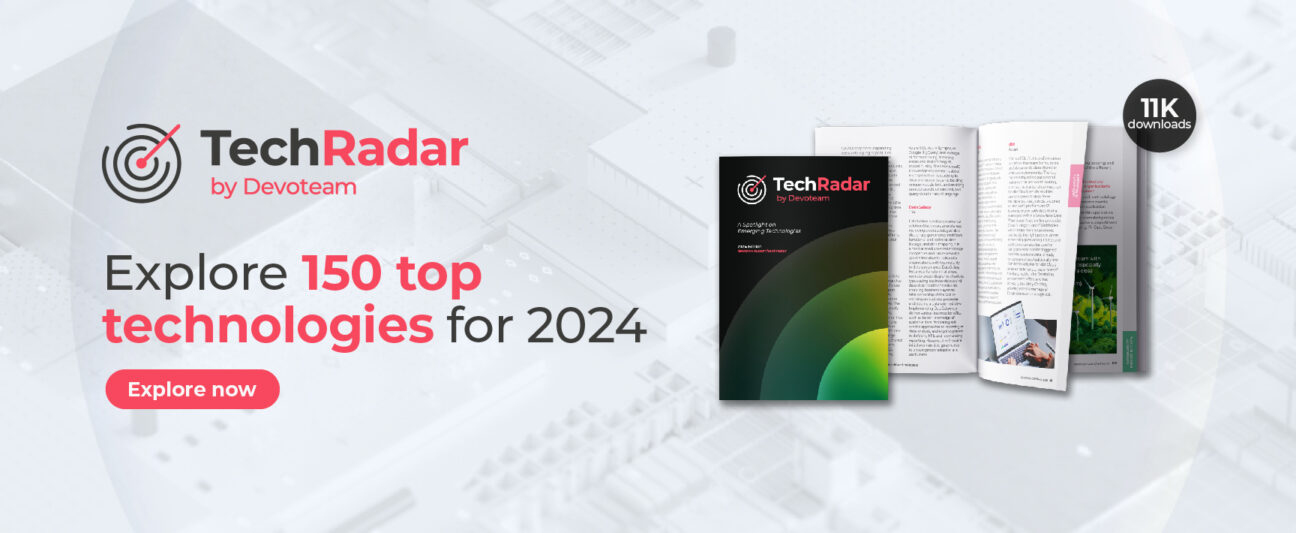
The AI tool that’s been creating the most buzz recently is ChatGPT, a generative AI chatbot that has taken the world by storm. Released for public use by Open AI in November 2022, ChatGPT became an instant success, acquiring more than one million users just five days after its launch and making headlines around the world – and the AI tool hasn’t shown any signs of slowing down.
With more than 25 million users visiting the site daily, it’s safe to say that ChatGPT is leading the market in generative AI – but does the chatbot live up to the hype? In this article, we’ll take a look at the technology behind ChatGPT, the capabilities, and limitations of the new GPT-4 model, plus a few other generative AI technologies to keep an eye on.
How does ChatGPT work?
ChatGPT (Generative Pretrained Transformer), is a generative language model based on the ‘transformer’ architecture. These models can process large amounts of data and learn to perform natural language processing tasks very effectively. For example, the specific GPT used by ChatGPT, featured on TechRadar by Devoteam, (which is fine-tuned from a model in the GPT-3.5 series), is 175 billion parameters in size, making it the largest language model trained to date.
To work, GPT needs to be “trained” on a large amount of text. GPT-3, for instance, was trained on a text set that included over 8 million documents and over 10 billion words. From this text, the model learns to perform natural language processing tasks and generate human-like responses to a wide variety of questions and prompts with a high level of accuracy and fluency. In fact, here’s a description generated by ChatGPT itself:
“ChatGPT is an advanced language AI model created by OpenAI. It generates human-like text based on input data and prompts, making it ideal for customer service, language translation, and content creation. Its ability to understand context and produce coherent responses sets it apart in the field of generative AI.”
However, as impressive as the AI Chatbot’s capabilities are, like most technology, GPT 3.5 is far from infallible. For instance, this version of the chatbot has been shown to struggle with nuanced language, mathematical problems, and generating false information. In answer to these limitations, in March 2023 Open AI released GPT-4, an updated version of the technology that has been described by the company as the “most capable and aligned” model yet.
GPT-4: What’s changed and what improved?
Among the most significant upgrades to GPT-4 is its multimodal capabilities. Unlike GPT 3.5 which is only able to process text-based prompts, GPT-4 is able to accept different inputs in the form of both texts and images. For example, if a user were to upload a questionnaire, GPT-4 could scan the document and generate appropriate responses to the questions. Similarly, the updated model could also read graphical input and make calculations based on the data presented.
OpenAI also claims that the creative capabilities of GPT-4 have improved, with the chatbot now capable of understanding more nuanced language as well as generating creative expressions such as poems, songs, and screenplays, and even mimicking users’ writing styles for more personalised results.
Additionally, OpenAI’s new model can now pass various standardised tests thanks to its new advanced reasoning abilities. Where earlier versions of the technology struggled to pass legal exams or perform on most Advanced Placement tests (math in particular), GPT-4 has the potential to place in the top 10 percent of US students taking the Uniform Bar Examination, according to OpenAI. Moreover, test results indicate that the system could score a perfect score of five on Advanced Placement exams in calculus, psychology, statistics, and history.
For developers, however, a more significant improvement in GPT-4 is its improved ability to code, allowing it to better understand, review and generate programming code in various languages. The new model will also feature the API capability, “system” messages, that enables accelerated application and service development by allowing users to prescribe style and task by describing specific directions. According to Open AI, the API will have a gradual rollout and will be made available to first to users and developers on the waitlist.
What are the limitations of GPT-4?
Though GPT-4 is a marked improvement from its predecessor, the new model is not without its flaws. For instance, GPT-4 is still afflicted by “hallucinations” – outputs that sound plausible but are factually inaccurate. These inaccuracies typically emerge from the AI model’s inherent biases, lack of real-world understanding, or training data limitations. Compared to GPT 3.5, GPT-4 shows a 40 percent improvement on tests that measure these hallucinations, however, Open AI has admitted that “GPT-4 still has many known limitations that we are working to address, such as social biases, hallucinations, and adversarial prompts.”
Other limitations until now include the inaccessibility of the image input feature. OpenAI has yet to make GPT-4’s visual input capabilities available through any platform because the research company is collaborating with a single partner to start. However, users can access GPT-4’s text input capability with a subscription to ChatGPT Plus, which guarantees subscribers access to the language model (with a usage cap) at the price of $20 a month. For users looking for a free alternative, Bing Chat, Microsoft’s chatbot tech co-developed with OpenAI is also powered by the GPT-4 model and is free for public use.
What are some generative AI tools to look out for?
ChatGPT has proven to be among the most powerful generative AI tools available, but it is far from the only AI tool on the market.
In March 2023, Microsoft announced the availability of GPT-4 in preview in Azure OpenAI Service and opened application access for current customers and partners. This service will give Azure customers access to advanced AI models including GPT-3.5, ChatGPT, and DALL•E 2, backed by Azure AI-optimized infrastructure, enterprise-readiness, compliance, data security, and privacy controls, along with integrations with other Azure services. Additionally, Microsoft subsidiary, GitHub, and OpenAI recently introduced Copilot. This tool uses a new model based on GPT-3 called Codex, which helps software developers write code more efficiently and avoid repetitive tasks with automatic code completion and suggestions.
In direct competition to ChatGPT, Google has released its own AI service based on transformer models, Bard, an AI chatbot based on the LaMDA family of large language models. While Bard functions similarly to ChatGPT, Google’s service pulls its information from the web, as opposed to utilising massive datasets like ChatGPT. Public access is currently limited, however, interested users can join the waitlist to participate in “an early experiment that lets you collaborate with generative AI.”
Lastly, Amazon has also entered the generative AI ring with its announcement of Bedrock, a fully managed service for building and scaling generative AI applications. Bedrock is a serverless experience that provides a range of pre-trained AI foundation models (FM) from startups like AI21 Labs, Anthropic, and Stability AI, as well as exclusive access to Titan FMs, a family of models trained in-house by AWS, providing customers with the flexibility to choose and customise models according to their use cases. Although currently available for “limited preview” only, service and launch updates are available through Amazon’s Generative AI information page.
How can AI transform your business?
As technology continues to evolve, AI-powered tools are rapidly shifting from instruments of convenience to becoming invaluable assets for growth and productivity in increasingly competitive markets. The field of generative AI based on transformer models, in particular, is growing at an expeditious rate, and we expect to see more exciting developments in the near future, particularly in 2023, which is expected to be the year that GPT becomes enterprise-ready – be it ChatGPT, Microsoft, or Google.

Want to learn more about ChatGPT?
Check out TechRadar by Devoteam to see what our experts say about it in the market.